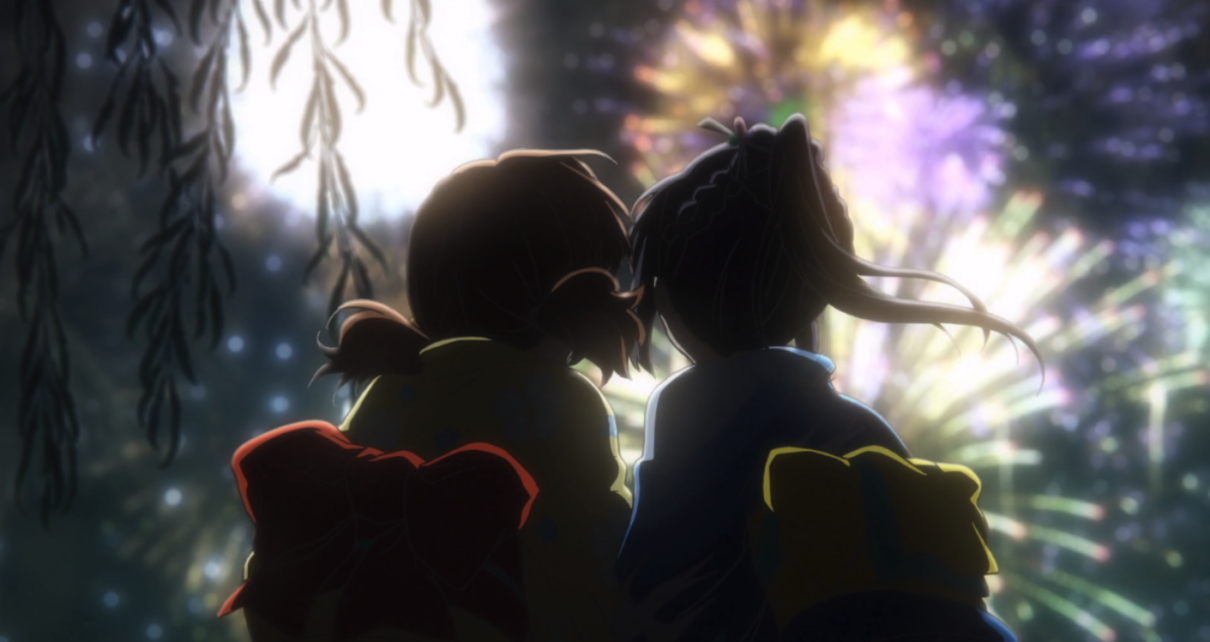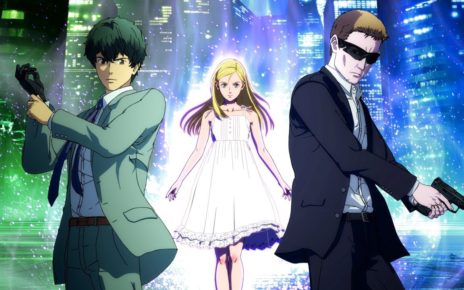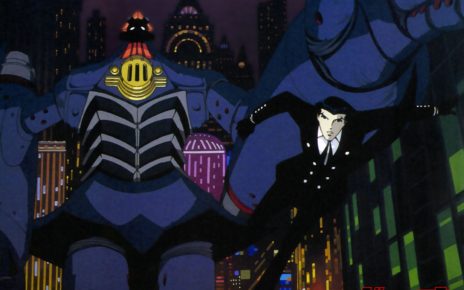“KyoAni makes me want to be a teen again,” I said to my boyfriend during an episode of Sound! Euphonium 2. I had watched and loved Sound Euphonium’s first season in 2015, but let the sequel fall to the wayside. It didn’t take long for me to get re-hooked. It is a gorgeous show, and I was reminded of how seriously it takes the concerns of its cast of mostly young women. I wish I hadn’t waited to experience one of the truly great teen dramas, and I wish I had been inspired to watch it under happier circumstances.
The horrific July 18th attack on the Kyoto Animation studio left me, like much of the anime community, heartbroken and at a loss for a reaction that felt true or useful. I am not a good public mourner, always without words or sentiments that seem right, and I almost never cry during news cycles of tragedies or celebrity deaths. Yet I found myself sobbing alone in my apartment, helpless and angry. Watching Eupho 2 seemed as good a way to process those feelings as any.
Relishing the fleeting days of youth is a sentiment that abounds in slice-of-life and teen melodrama anime. It often makes me feel alienated, as you truly could not pay me to go back to high school. But Kyoani works hit something in me. The experiences of youth portrayed in Sound! Euphonium or Hyouka or The Melancholy of Haruhi Suzumiya don’t argue that adolescence is an ideal, golden time. What they do is sharpen, with careful writing and painstakingly detailed animation, the feelings of importance that even tiny interactions seem to carry as a young person. KyoAni is the undisputed master of mono no aware—the Japanese concept of a gentle awareness of transience—and it seems especially cruel that the artists so masterful at creating these moments would have their lives and work destroyed in a violent tragedy. The future of the studio is uncertain, but in this time of grief, I’ve tried to focus on what makes KyoAni stories so viscerally familiar and human.
A few years ago, I had the privilege of helping Yoshitoki Oima’s A Silent Voice through its English-language publication at Kodansha Comics. It is a strange and special manga. The coming-of-age tale of a deaf girl and her former bully reconnecting and struggling to come to an understanding, it was frequently devastating and heartwarming, but also surprising and darkly funny. Oima has a strong instinct for visual storytelling, like the isolated Shoya (above) literally blocking out the faces of his peers.
When a full length film adaptation from KyoAni was announced, we were thrilled. It was a hard property to pull off, but I couldn’t think of any other studio that would be able to do its nuance and weirdness justice. I was right, and the movie introduced a new audience to something very close to my heart. It also enchanted a new group of anime fans with the magic of KyoAni—a sensitivity to quality and marriage of animation and writing that had built a loyal following for over a decade.
KyoAni’s x-factor often starts with the choice of source material, and the novels and manga that become their productions tend to be off-beat and subtle compared to many properties optioned for anime. Hyouka counts among these, and it was the first KyoAni anime that really stuck with me. It’s an odd little show from 2012, the middle of the studio’s career. It isn’t the one that made the biggest impact on anime fandom at large and it would be followed by more impressive feats of animation, but it was the first time I was in awe of the “KyoAni magic”: every room looked lived-in, every character was believably sincere, and the smallest corners of everyday life felt textured.
Hyouka is a series of novels about a classic literature club that solves everyday mysteries. The characters don’t have overblown personalities and the stakes of the mysteries are usually low enough that the story never needs to speed up from its measured, even sleepy momentum. At its heart, it’s a gentle story about an unlikely group of friends, and it starts the way so many high school stories do: a boy notices a cute girl.
Viewers, just like that boy, are caught in her eyes and ensnared by her infectious curiosity. Hyouka is an endlessly whimsical show, transporting us in and out of the characters’ imaginations to make the mysteries as irresistible as the literature club finds them. A functional adaptation could have been done on a smaller budget and with less microscopic care for detail, but the quality of KyoAni’s production makes its world breathe and sparkle.
The attention to small interactions and meaning that lives in gestures and tiny expressions extends to KyoAni’s genre ventures. The studio’s adaptation of the Haruhi Suzumiya light novels, a science fiction story about a group of mostly supernatural high school students led by a charismatic teenage girl who just might be god, is the show that put KyoAni on the map for many fans. It was layered with magic, intrigue, and weirdness in both content and art direction, but it stayed grounded in the earnest feelings of its young characters. The original series and its follow-up film, The Disappearance of Haruhi Suzumiya (which adds a deft time travel plot to the franchise), still call back to the sense that every victory or setback of adolescence feels outsized and cosmic. In Haruhi, world-changing phenomena and the question of a disaffected boy reuniting with the friends who make his life brighter are equal in narrative and emotional weight.
KyoAni staff have always had an innate sense for the balance of mundane and fanciful. Their slice of life shows, whether a drama like Sound! Euphonium or the madcap comedy of Lucky Star, draw out the ways everyday life can still be painfully beautiful or absurd. In the shows that actually are absurd, like the surreal Nichijou, there’s still a groundedness behind the talking cat and shonen battle coffee orders; a reality that these are weird, bored teens making the most of small town life. 2017’s Miss Kobayashi’s Dragon Maid became a fan favorite not so much for its fantastical premise, but for its touching portrayal of a queer chosen family.
In the wake of last week’s tragedy, it’s hard not to think about the studio’s 2018 Violet Evergarden, a steampunk historical fantasy and elegant mediation on connection and grief. (It’s streaming on Netflix.) The titular protagonist takes a job as an “auto memories doll,” a scribe who will travel anywhere to compose letters for others. As Violet improves in finding the right words for her clients, she is able to find the strength to write her own letter to the presumed-dead comrade and guardian who became the first person to show her genuine love and acceptance. “I couldn’t understand anything about how you felt,” she writes. “But within this new life you gave me, I’ve begun to feel the same way as you, if only a little.”
The impact of KyoAni’s stories may not always be so huge as showing people how to love, but their concern for empathy has helped inspire an enthusiastic and supportive fandom. And if there’s a through-line in KyoAni’s work other than the sensitivity and quality of their work, it’s the fans’ devotion. In my experience in the anime community, I’ve never seen people credit a specific studio for as much healing and renewed sense of hope as they give to KyoAni. I’ve seen burned-out adults find solace in the small-scale triumphs of the girls in K-On! and friends see themselves in the awkward but earnest romance of Love, Chuunibyou, and Other Delusions. In the past week, those fans are also struggling to find the right words of appreciation and comfort.
I keep thinking about a scene in Eupho 2 where a character says, “We’re trying to become special.” That specific word choice struck me. It’s not “I want to be special.” The idea that being special could be a process of continuous, forward momentum—a process of becoming as much as being—reminds me of KyoAni itself. Behind the often unparalleled quality of its productions, KyoAni is known for its effort to give staff creative control and livable salaries, a rarity in the anime industry. It has had a reputation for hiring and boosting the careers of women, and the demographics of last week’s casualties sadly reflect this. Even in tragedy, I get the sense that the team that made and makes up KyoAni knows that being special is something you can never stop trying to be.
Thanks for reading The Dot and Line, where we talk about animation of all kinds. Don’t forget to follow us on Twitter and sign up for our newsletter





